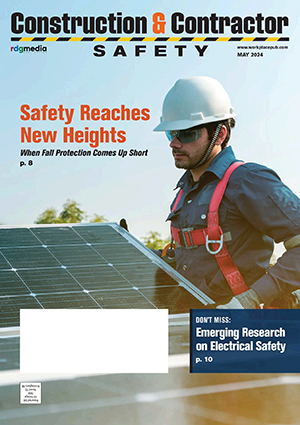Dangers of Poor Communication on a Construction Site
By Rick Farrell, Contributor
Employers and workers in the construction field face a range of challenges, from labor shortages to poor organization.
Another common issue that affects the construction industry is poor communication, which can lead to project delays, mistakes on the job site, severe injuries, and even fatalities.
This guide delves deeper into the consequences of not being able to communicate effectively. It also shares practical strategies for correcting this problem in the construction industry.
Construction Communication Statistics
For many people, poor communication is not the first thing that comes to mind when thinking about problems on a construction site. However, a lack of communication can lead to numerous issues for everyone involved in a project.
The Project Management Institute (PMI) reveals that poor communication is the primary reason why one-third of construction projects fail[1]. The PMI also conducted a comparison between minimally effective and highly effective communication – the results of which are demonstrated in Table 1 on the following page.
| Minimally Effective Communication | Highly Effective Communication |
| 37% of projects get completed on time | 71% of projects get completed on time |
| 48% get completed within budget | 76% get completed within budget |
| 52% of teams meet their original goals | 80% of teams meet their original goals |
Why Does Effective Communication Matter in Construction?
Communication matters in all industries, but it’s especially critical in the construction world. The following are some of the most significant reasons for employers and employees to prioritize it:
- Stronger Teamwork and Collaboration: When everyone communicates effectively, it’s easier for them to work together on various tasks.
- Improved Project Quality: Better communication and collaboration also lead to fewer mistakes and better project quality.
- Increased Efficiency: Improved communication and collaboration can also help teams complete projects faster, since they experience fewer misunderstandings.
- Greater Client Satisfaction: Better project quality, especially when it’s combined with efficiency and met deadlines, results in more satisfied customers.
- Enhanced Budget Management: Better communication can prevent mistakes and misunderstandings that could result in overspending.
- Decreased Accidents and Injuries: When all team members understand their roles and responsibilities, as well as proper safety protocols, they’re less likely to be injured on the job.
Causes and Consequences of Poor Communication
Poor communication is often a sign of bigger issues on the construction site. Some of the most common causes of poor communication and the potential problems that can result from them are listed below:
Confusion Over Terminology
Construction workers aren’t always familiar with the terminology used on the site or during safety training meetings. Confusion over terminology can create misunderstandings between colleagues, which can then lead to mistakes, potential accidents or injuries from those mistakes, and project slowdowns.
Fear of Criticism
Workers may also be afraid to speak up in certain situations – such as when they discover a safety hazard – because they fear criticism or negative consequences from a superior. Instead, they look the other way and avoid pointing out a potential problem. In some cases, their failure to do so can then lead to accidents and injuries.
Hearing and Comprehension Difficulties
Poor communication on the construction site can also be the result of people simply not being able to hear each other. Loud machinery, the sound of traffic going by, many workers speaking at once – all these issues can cause hearing difficulties, miscommunications, and misunderstandings.
Tips for Enhancing Communication Skills for Construction Professionals
As the table at the beginning of this article shows, highly effective communication leads to better outcomes for construction crews, employers, and customers. How does one achieve highly effective communication among team members, though?
The following are some guidelines that can help employers improve communication and produce better results:
Establish a Chain of Command
A clearly defined chain of command ensures that team members know whom they should contact if they notice a potential safety hazard or another issue on the job site. During training, employees should learn who is above them in the hierarchy, who is above that person, etc.
Use Effective Communication Methods
Shouting across the job site isn’t the most effective way to deliver a message to the entire team. Implementing other communication tools, such as radios and headsets, can ensure everyone hears announcements and knows what’s expected of them. Hand signals can also help team members communicate even when loud machinery is being used.
Avoid Jargon
Employers, leaders, and team members should strive to use clear, simple language and avoid jargon. Relying too heavily on jargon can lead to misunderstandings, especially among newer team members and those who speak a different language than the majority of the crew.
Provide Regular Training
Investing time and resources in training courses can help employers ensure team members are aware of the proper tools and techniques to use while on the job site. It also provides employees with opportunities to learn safety protocols and find out how to handle different situations.
Encourage Open Communication
Fear of criticism is a significant contributor to people’s hesitancy about speaking up when they notice a problem on a construction project. To combat this issue, employers and leaders should encourage open communication. They may even want to implement anonymous communication methods (such as suggestion boxes) for employees to feel safer delivering messages.
To encourage open communication further, employers should also implement people’s suggestions and promptly respond to questions or concerns to show employees that they’re heard and their voices matter.
Provide Proper Hearing Protection
Workers should have access to proper hearing protection while using heavy machinery and other equipment on construction sites. They may even require double hearing protection for maximum safety.
Prioritizing the right hearing protection[2] will protect employees from permanent hearing damage (which can further interfere with communication efforts). It also improves productivity by helping employees block out noise from machinery that could distract them from their specific responsibilities.
Put it in Action
Poor communication on a construction site comes with numerous consequences, including injuries, accidents, and decreased productivity. Not being able to communicate effectively puts all team members at risk and can lead to dissatisfied clients.
However, by implementing the strategies discussed in this article, employers can improve communication and protect themselves and their employers.
Rick Farrell is President, PlantTours (plant-tours.com).
[1] https://www.pbctoday.co.uk/news/digital-construction-news/unified-communication/105303/
[2] https://www.plant-tours.com/blog/double-hearing-protection/



